#isabeau of bavaria
Text


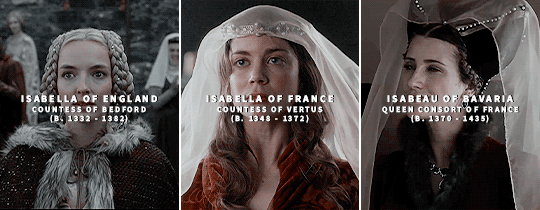



↳ Historical Ladies Name: Isabella/Isabelle
#isabella of gloucester#isabella of angouleme#isabella of england#isabella of aragon#isabella of france#isabella of valois#isabeau of bavaria#isabella of portugal#isabella i of castile#isabel neville#isabella d'este#isabella of austria#isabella of parma#historicalnames*#historyedit#my gifs#creations*
350 notes
·
View notes
Text
« Le Bal des Ardents »







Finished a seven pages summary of one of my favorite historic moment in French history « Le Bal des Ardents » ! It is set the 28 January 1389 .
Now some facts I couldn’t put in it !
Charles VI killed four men in a frenzy because he thought they were British soldier send to kill him ! They were in facts, only his close guard. The episode started after a man talked to him in the forest it all took place. He took 8 months to recover from this.
Strangely enough, even though « le Bal des Ardents » was a hugely traumatizing event, it is not the one that granted him his nickname « Le Fol » (the crazy ). It’s only 7 months after his mental health declined again without signs of improvements.
Infos kind of vary there but the event took place in the Hotel Saint-Pol OR the destructed and then reconstructed Hotel de la Reine Blanche.
Louis d’Orléans was 17 when it happened. People did think he did this to kill Charles VI and took the thrones. After the event he build the chapel « Le Couvent des Célestins » to expiate his crimes.
English is not my first languages also , sorry about the mistakes !!
#history#art#comic#digital art#France#france history#historic event#history comics#history comic#It was very long to do#cw: gore#cw body horror#Louis D'orléans#Charles VI#isabeau of bavaria#louis of Orléans#louis of orleans#charles 6#King#French King#france king
22 notes
·
View notes
Text
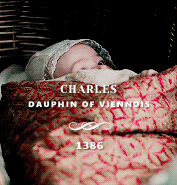



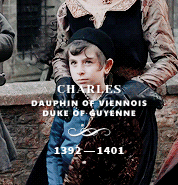




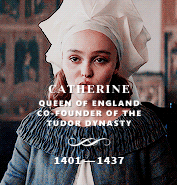


the children of Isabeau of Bavaria and Charles VI, King of France
#historyedit#perioddramaedit#14th century#15th century#isabeau of bavaria#charles vi#charles vii#mine#*
283 notes
·
View notes
Photo
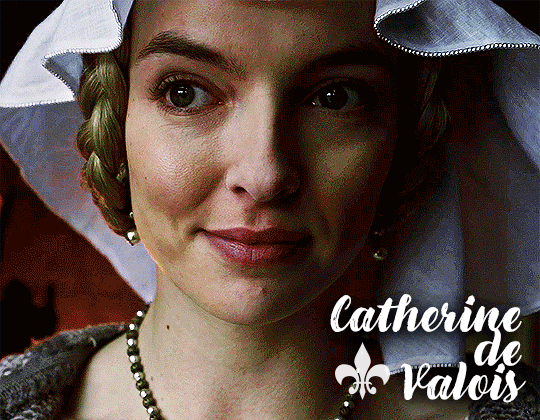
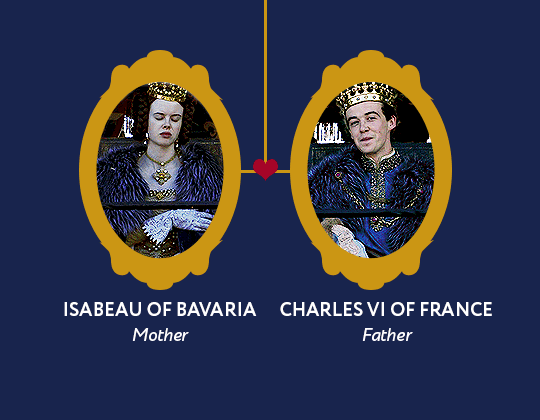


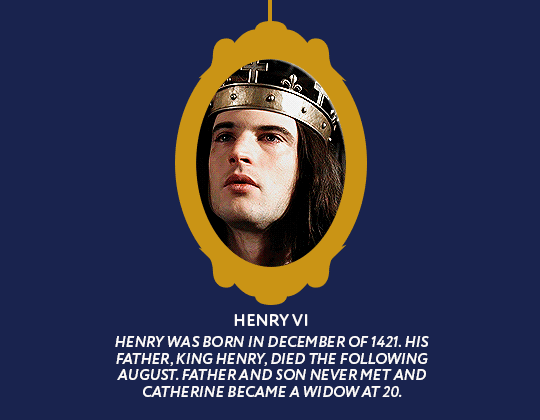

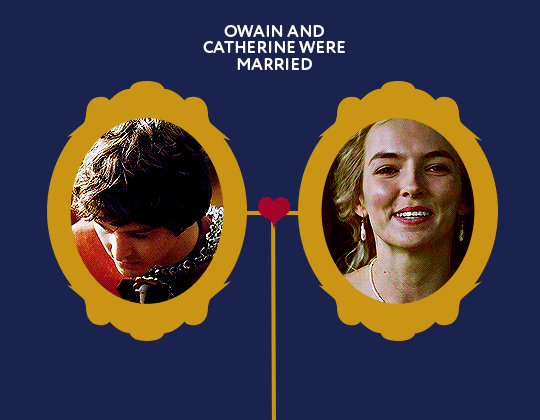


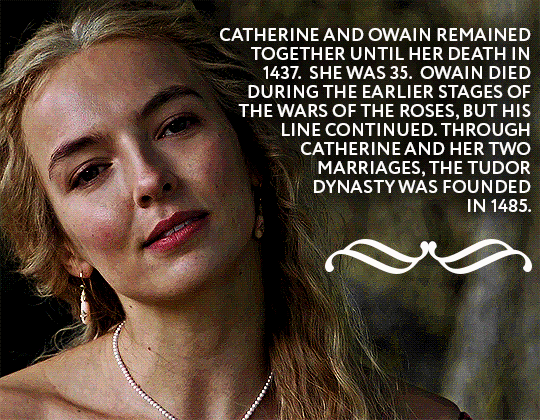
CATHERINE OF VALOIS ❀
QUEEN CONSORT OF ENGLAND
#catherine of valois#catherine de valois#periodedit#perioddramaedit#historyedit#onlyperioddramas#tudorsource#tudorgifs#henry v#henry vi#henry tudor#henry vii#isabeau of bavaria#charles vi of france#charles vi#elizabeth of york#hundred years war#the wars of the roses#margaret beaufort#jodie comer#alexander vlahos#timothee chamalet#perioddramasource#weloveperioddrama#period drama#history#gifshistorical#middle ages#medieval#tudor
800 notes
·
View notes
Text

A Magical Girl that is basically to Magical Girls what they are to ordinary humans, to the point where many are saying she is outright making her own contracts independent of Kyubey…

Probably a coincidence, especially given Akuma is even more powerful than Isabeau was…
48 notes
·
View notes
Text

Le Bal des Ardents by Georges Rochegrosse
The Bal des Ardents (Ball of the Burning Men), also called Bal des Sauvages (Ball of the Wild Men)
#georges rochegrosse#art#bal des ardents#medieval#history#paris#france#europe#french#nobility#charles vi of france#louis i duke of orléans#isabeau of bavaria#duchess of berry#masquerade ball#wild men#wood savages#middle ages#pagan#paganism#charivari#dancers#dance#european#mythical creatures
136 notes
·
View notes
Text
Educating the princesses

“All of these princesses, both foreign and French, had received a first-rate education. Some were raised at the French court from childhood, such as Philip IV’s wife Joan of Navarre and Charles VIII’s young fiancée Margaret of Austria. Others were educated within their own families in their respective principalities.
Educators had long debated what women should be taught. In 1265,
Philip of Novara had advised against teaching girls—except for nuns— how to read and write. He was, however, in the minority. Far from being neglected when it came to aristocratic education, women were the recipients of veritable miroirs aux princesses (didactic works presenting the exemplary image of the good ruler or, for women, the ideal princess), which reveal all the care that went into their training—as religious as it was moral and intellectual.
(...)
Beyond these theoretical treatises, sources on the practice of that time provide information about the educational methods of the period. Young princesses learned to read and often write. Such instruction often took place within the palace under a tutor. At the court of Savoy in the mid-fifteenth century, Pierre Aronchel was the schoolmaster of Louis and Anne of Cypress’s eldest daughters Margaret and Charlotte (future wife of Louis XI).
Like their brothers, young princesses first learned reading and religion. They learned to read using an alphabet book (Margaret of Austria learned the alphabet using a book handsomely bound in black velvet) and continued with psalters and books of hours. At the age of seven, young Joan of France, who was married to the Count of Montfort, received a richly illuminated book of hours of Notre-Dame from her mother Isabeau of Bavaria. During the fourteenth century, young girls at the court of Savoy practiced reading using liturgical collections, matins and penitential psalms, which were replaced by books of hours in the fifteenth century. Like their brothers, Savoyard princesses also learned to write.
Latin, however, was reserved for boys, which was one of the primary differences when it came to education. Princesses only knew the necessary prayers and formulas for following mass and reading their books of hours. There were a few exceptions nonetheless. Saint Louis’s sister Isabella of France (d. 1270), for example, was reputedly an excellent Latinist.
Failing Latin, aristocratic ladies knew other languages. John II’s future wife Bonne of Luxembourg, who had been raised in Bohemia, spoke Czech, German and French. Yolanda of Bar —daughter of Robert, Duke of Bar, and wife of John I, King of Aragon—could read ‘Limousin’ and Latin in addition to being able to write in French and Catalan. Others had a harder time learning a foreign language. During her entry ceremony in Paris in 1389, Isabeau of Bavaria was criticized for her poor understanding of French—four years after she had arrived in the kingdom.”
Queenship in medieval france 1300-1500, Murielle Gaude-Ferragu
#history#women in history#women's history#queens#middle ages#medieval women#france#french history#medieval history#isabeau of bavaria#Joan of navarre
96 notes
·
View notes
Note
hello, Happy New Year! Is there any history book you're reading and would recommend?
Happy New Year!!!
I'm reading "The Life and Afterlife of Isabeau of Bavaria" by Tracy Adams and "The Creation of the French Royal Mistress" by Tracy Adams and Christine Adams. I would definitely recommend both, they're fantastic!
#sorry for the delay in answering#I love Anne de Pisseleu and am really curious to know more about Isabeau of Bavaria so these were great history books to start 2024!#ask#queue
2 notes
·
View notes
Text
Ages of French Queens at First Marriage
I have only included women whose birth dates and dates of marriage are known within at least 1-2 years, therefore, this is not a comprehensive list.
This list is composed of Queens of France until the end of the House of Bourbon; it does not include Bourbon claimants or descendants after 1792.
The average age at first marriage among these women was 20.
Ermentrude of Orléans, first wife of Charles the Bald: age 19 when she married Charles in 842 CE
Richilde of Provence, second wife of Charles the Bald: age 25 when she married Charles in 870 CE
Richardis of Swabia, wife of Charles the Fat: age 22 when she married Charles in 862 CE
Théodrate of Troyes, wife of Odo: age 14 or 15 when she married Odo in 882 or 883 CE
Frederuna, wife of Charles III: age 20 when she married Charles in 907 CE
Beatrice of Vermandois, second wife of Robert I: age 10 when she married Robert in 990 CE
Emma of France, wife of Rudolph: age 27 when she married Rudolph in 921 CE
Gerberga of Saxony, wife of Gilbert, Duke of Lorraine, and later of Louis IV: age 16 when she married Gilbert in 929 CE
Emma of Italy, wife of Lothair: age 17 when she married Lothair in 965 CE
Adelaide-Blanche of Anjou, wife of Stephen, Viscount of Gévaudan, Raymond III, Count of Toulouse, and later Louis V: age 15 when she married Stephen in 955 CE
Bertha of Burgundy, wife of Odo I, Count of Blois, and later Robert II: age 19 when she married Odo in 984 CE
Constance of Arles, third wife of Robert II: age 17 when she married Robert in 1003 CE
Anne of Kiev, wife of Henry I: age 21 when she married Henry in 1051 CE
Bertha of Holland, first wife of Philip I: age 17 when she married Philip in 1072 CE
Bertrade of Montfort, wife of Fulk IV, Count of Anjou, and second wife of Philip I: age 19 when she married Fulk in 1089 CE
Adelaide of Maurienne, second wife of Louis VI: age 23 when she married Louis in 1115 CE
Eleanor of Aquitaine, first wife of Louis VII and later Henry II of England: age 15 when she married Louis in 1137 CE
Adela of Champagne, third wife of Louis VII: age 20 when she married Louis in `1160 CE
Isabella of Hainault, first wife of Philip II: age 10 when she married Philip in 1180 CE
Ingeborg of Denmark, second wife of Philip II: age 19 when she married Philip in 1193 CE
Agnes of Merania, third wife of Philip II: age 21 when she married Philip in 1195 CE
Blanche of Castile, wife of Louis VIII: age 12 when she married Louis in 1200 CE
Margaret of Provence, wife of Louis IX: age 13 when she married Louis in 1234 CE
Isabella of Aragon, first wife of Philip III: age 14 when she married Philip in 1262 CE
Marie of Brabant, second wife of Philip III: age 20 when she married Philip in 1274 CE
Joan I of Navarre, wife of Philip IV: age 11 when she married Philip in 1284 CE
Margaret of Burgundy, wife of Louis X; age 15 when she married Louis in 1305 CE
Clementia of Hungary, second wife of Louis X: age 22 when she married Louis in 1315 CE
Joan II, Countess of Burgundy, wife of Philip V: age 15 when she married Philip in 1307 CE
Blanche of Burgundy, first wife of Charles IV: age 12 when she married Charles in 1308 CE
Marie of Luxembourg, second wife of Charles IV: age 18 when she married Charles in 1322 CE
Joan of Évreux, third wife of Charles IV: age 14 when she married Charles in 1324 CE
Bonne of Luxembourg, first wife of John II: age 17 when she married John in 1332 CE
Joan I, Countess of Auvergne, wife of Philip of Burgundy, and later John II: age 12 when she married Philip in 1338 CE
Joanna of Bourbon, wife of Charles V: age 12 when she married Charles in 1350 CE
Isabeau of Bavaria, wife of Charles VI: age 15 when she married Charles in 1385 CE
Marie of Anjou, wife of Charles VII: age 18 when she married Charles in 1422 CE
Charlotte of Savoy, second wife of Louis XI: age 9 when she married Louis in 1451 CE
Anne of Brittany, wife of Maximilian I, HRE, Charles VIII and later Louis XII: age 13 when she married Maximilian in 1490 CE
Joan of France, first wife of Louis XII: age 12 when she married Louis in 1476 CE
Mary Tudor, third wife of Louis XII: age 18 when she married Louis in 1514 CE
Claude of France, first wife of Francis I: age 15 when she married Francis in 1514 CE
Eleanor of Austria, wife of Manuel I of Portugal and later second wife of Francis I: age 20 when she married Manuel in 1518 CE
Catherine de' Medici, wife of Henry II: age 14 when she married Henry in 1533 CE
Mary, Queen of Scots, wife of Francis II: age 16 when she married Francis in 1558 CE
Elisabeth of Austria, wife of Charles IX: age 16 when she married Charles in 1570 CE
Louise of Lorraine, wife of Henry III: age 22 when she married Henry in 1575 CE
Margaret of Valois, first wife of Henry IV: age 19 when she married Henry in 1572 CE
Marie de' Medici, second wife of Henry IV: age 25 when she married Henry in 1600 CE
Anne of Austria, wife of Louis XIII: age 14 when she married Louis in 1615 CE
Maria Theresa of Spain, wife of Louis XIV: age 22 when she married Louis in 1660 CE
Marie Leszczyńska, wife of Louis XV: age 22 when she married Louis in 1725 CE
Marie Antoinette, wife of Louis XVI: age 15 when she married Louis in 1770 CE
37 notes
·
View notes
Text
Theory: Cinder is the king Jaune's Joan of Arc is looking for
*sniffs*
Ah, nice clean air over here, time to pollute it with some more Knightfall speculations.
Cinder as king Charles VII (king Joan of Arc helped) is something I brought up in several of my theories, most notably Indecisive King one (that I will link below).
However, in those theories I mostly just briefly touch the subject or in case of Indecisive King theory I mostly talk about parallels between Joan of Arc and Indecisive King story. I wanted to make comprehensive theory on why do I think Cinder is Charles VII in vacuum of Joan of Arc story. Some points will inevitably be repeated from previous theories.
CHILDHOOD:
Charles was born in hotel Saint Pol, French royal residence. This of course could all be massive coincidence, but just as same could be the reason why writers chose Cinder's childhood to be in Glass Unicorn, another hotel. Cinder's backstory is relatively straight forward Cinderella story, so when you change setting from private residence to hotel, it does stick out. Devil's advocate within me tells me that can be explained by writers wanting for her abuse to be public so it can fuel her later resentment towards the world. But at the same time, of all places one can be publicly abused in, they chose hotel. Another direct parallel is that both end up permanently leaving it at age 15 (although this one can be explained by them wanting to give Cinder same age as Ruby when her story truly begins), never to return, but let's not get ahead of ourselves.
Charles was 11th child of Charles VI and Isabeau of Bavaria, but for the sake of the argument, he is the third child because girls are stinky and don't matter in French succession laws. This greatly diminished his position and he was never expected to amount to much besides ruling a duchy. However, his position was greatly improved due to deaths of both of his older brothers, making him heir apparent. Unlike Cinder, Charles had nothing to do with their deaths but his political opponents did accuse his faction of poisoning both of them. So we have another parallel, albeit weaker one: both were raised in shadow of 2 older siblings who ended up dying young.
____________________________________________________________
Charles became heir to the throne at age 14, or Dauphin (and to avoid confusion, I will from now on refer to him as such). Another benefit of becoming Dauphin is that he became regent to his father Charles VI, who was suffering from severe mental illness. However, his mother wanted to rule instead of him as a regent creating a rift between them. Dauphin put his mother under house arrest and took over as sole regent. His mother would never forgive him this and became his political enemy. She allied herself with duke of Burgundy, John the Fearless, another one of Dauphin's political opponents. John and his forces entered Paris and attempted to capture Dauphin who managed to escape. This is where his escape from hotel Saint Pol and slanders about his faction killing his brothers come from. Dauphin and John attempted to reconcile their differences, but at one of their meetings, at Montereau, Dauphin's men murdered John.
This has several parallels. First of all, both Dauphin and Cinder had bad relationship with their mothers, being their enemy in both cases. Rift emerging due to said mothers wanting to control them. Although resolution of conflict is different, Dauphin puts his mother under house arrest, while Cinder had more... permanent solution. This is where John the Fearless comes in, or in Cinder's case Rhodes. Both are model warriors of their respective cultures (former was crusading knight, latter was huntsman) that came after Dauphin/Cinder to capture them for their transgressions. Their capture attempt failed, leading to their eventual deaths. You can even draw a small parallel between Dauphin attempted reconciliation with John and Cinder pleading with Rhodes, both of which failed. That's one interpretation of end of Cinder's flashback events, here comes another.
The fact Dauphin murdered duke of Burgundy destroyed his reputation. Duke's son Philipp started negotiating with English and gave them his support. Together, English, Burgundians, king Charles VI and Isabeau of Bavaria concluded Treaty of Troyes, which disinherited Dauphin and made English de facto rulers of France. Upon subsequent failing to appear in front of court, Dauphin was also declared traitor, outlaw and was banished from the realm.
When you combine this with previous incident of Dauphin murdering duke of Burgundy, you get alternative read of the events. Duke of Burgundy is now Madame instead of Rhodes, who takes the role of king Charles, intervening after murder happened. Reason I feel Rhodes is good read for Charles VI is because both characters are relatively inactive up until this moment of the story (Rhodes knew Cinder was abused yet did bare minimum, Charles VI on the other hand was mostly a puppet of powerful nobles like duke of Burgundy), both are father figures (or literal father in Charles' case), both took Dauphin/Cinder under their wing as their successors, both disinherited and declared Dauphin/Cinder an outlaw after they murdered someone. Either way you read it, parallel stands. Both Dauphin and Cinder lashed out and murdered person trying to control them and as a result became an outlaw and abandoned by their father figures.

RISE TO POWER:
Combined force of Burgundians and English forced Dauphin to escape to Southern France where he had much more support thanks to his connections to Anjou dynasty. His main benefactor was Yolande of Aragon, powerful queen dowager and so called Queen of Four Kingdoms (Aragon, Sicily, Cyprus, Jerusalem). She had massive influence on Dauphin and became a mother figure to him.
Now, we don't now how Cinder started working for Salem, but considering last time we saw her in her flashback she was wanted criminal, it's safe to say she was either saved by Salem or somehow sought her out. Whatever happened out of these two interpretations, it matches with Dauphin taking refuge in Yolande's lands and her protecting him. Similarities between Yolande and Salem are simple but obvious: both are powerful queen dowagers, both are mother figures to Dauphin/Cinder. Even Yolande holding title Queen of Four Kingdoms works with Salem, being most powerful being in all of Remnant's four kingdoms. Difference is that Yolande was mostly benevolent towards Dauphin (although Yolande was political realist and did lot of it for her own benefit), while Salem was shown to be highly abusive towards Cinder, mirroring Madame's treatment.
__________________________________________________________
When his father died in 1422, Dauphin proclaimed himself King of France, despite losing that right due to Treaty of Troyes. On top of that, Dauphin could not be properly crowned due to traditional French relics being held in hostile territory in Rheims. This made his claim lack legitimacy, especially considering newborn English King Henry VI was also proclaimed the King of France. During the ceremony, he married Yolande's daughter Marie, becoming Yolande's son in law.
I've mentioned this several times in my theories, but Maidens are basically royalty. Not under all circumstances, but they definitely are when looked through the lens of medieval Europe. Kings were God's emissaries on Earth which gave them legitimacy among the common people. Similar to that, Maiden powers have divine origin. Both are transferred hereditarily and in the story number of Maidens matches number of kingdoms. I hold similar stance for Silver eyes and Ozma's incarnations. So Cinder proclaiming herself Fall Maiden does fit Dauphin proclaiming himself king of France.
Both of their seizures of power go against the established law (Dauphin defying Treaty of Troyes, Cinder defying both Amber's and Ozpin's choice). In both cases there is a catch to their seizure of power: Dauphin cannot reap the full benefits of being the king due to lack of legitimacy, Cinder cannot fully use Maiden powers due to only having half of them. Since Cinder's attack on Amber happens before plot begins, it's also possible her ages matches that of Dauphin when he proclaimed himself the King, 19 (Cinder is in early to mid twenties at the beginning of the show, if event takes place few years back it is entirely possible). Dauphin's lack of legitimacy can be translated again to Cinder after she fully takes Fall Maiden powers but is unable to locate "her" relic, Crown of Choice. Just like Dauphin is King without the crown, so is Cinder Maiden without the Crown.
Marriage to Yolande's daughter is less clear parallel, but I feel like this relates to Cinder's grimmification. Dauphin is married to Marie after proclaiming himself as King of France while Cinder ends up grimmified in immediate aftermath of obtaining Fall Maiden power. Salem is Queen of Grimm and was shown to be control them, making them effectively her children. Grimmification is something that binds Cinder to Salem, just like marriage to Marie binds Dauphin to Yolande as family.
Another parallel comes from other claimant for the French throne, newborn Henry VI. Due to being newborn, decision making was delegated to his regent, Duke of Bedford. This is double parallel. One is to Amber, direct rival to Fall Maiden power who due to her coma was unable to make any decisions on her own (making Ozpin her regent). Amber also held her power "legally" (and Henry VI is technically legal ruler due to Treaty of Troyes) while Cinder is usurper. Other parallel is to Ruby, being more significant rival to Cinder. This works with their age gap (although not as massive as with Dauphin and Henry), especially since Cinder derisively refers to her as a child. Other is symbolic, both Henry and Ruby have rose as family emblem.
______________________________________________________________
Dauphin would attempt to seize the rest of the France on several occasions. At first having some success (and getting some important alliances through Yolande's diplomacy), but suffering series of devastating defeats like those at Cravant (1423) and Verneuil (1424). Eventually, Burgundians and English would go on offensive and attack Dauphin's holdings, starting the siege of Orleans (1428).
This is pretty straightforward: Cinder's main goal is seizing all Maiden powers and she had exactly zero success with that after seizing Fall Maiden power back in Volume 3. Additionally, she is yet to seize the Crown or even find out where it is. This matches Dauphin being unable to become sole legitimate ruler of France or be properly crowned. In both battles of Cravant and Verneuil, French had massive numerical advantage, but lost to superior Anglo-Burgundian leadership. This matches to Cinder getting foiled both at Haven and Atlas. You might argue she won at Atlas, but not really. Salem won, being given two Relics, Cinder's long term goals went unaccomplished. Initially successful diplomatic game Dauphin's side had can also be paralleled to White Fang and Bramwen tribe temporarily allying themselves with Cinder. But just like in Dauphin's case, that advantage has been lost with entire Remnant now uniting to combat the threat of Salem.

UNWORTHY KING:
In this section I will go over some known Dauphin's traits. He was described as notoriously weak, passive and indecisive man. Hesitant to take action and reliant on advice of his court favorites. He lacked real authority which was even exploited by his various subjects (there were several cases in which King had to ransom his own servants after his commanders captured them). This is mixed bag when compared to Cinder.
On the one hand, you do have parallel of both Dauphin and Cinder always being under someone's control (Armagnac faction, Yolande and powerful advisors like Tremoille in Dauphin's case, Madame and Salem in Cinder's). On top of that, there is some illusion of freedom in both cases. Dauphin thought he'd be free after he imprisoned his mother and killed his political rival, yet he simply felt under control of different individuals. Similarly, Cinder thought she was free after she killed Madame and Rhodes, only to end up in similar relationship with Salem.
However, passivity is something that's hard to come by with Cinder. She is one of the most active and goal oriented characters in the entire story. Indecisiveness also doesn't fit, but I feel like this one is only temporary. Cinder will eventually have to face the prospect that her quest for power is completely doomed and without any plausible winning scenario (No matter how things play out, she'll either end up as Grimm or die fighting). If this does happen, then you can be sure as hell indecisiveness will show up. Highly detrimental passivity and indecisiveness are traits that parallel Dauphin more with Indecisive King from the Remnant fairy tale of the same name (Which I theorized is based on Joan of Arc story).
Lack of authority is interesting one. Cinder wants to control everything around her, best seen with her attempts with Emerald and Mercury. However, more often than not, her comrades show minimal respect for her (Tyrian, Neo, Watts) and she is abandoned even by her supposedly loyal cohort (Emerald left her, Mercury distanced himself from her). So despite her best attempts, she does indeed lack authority.
______________________________________________________________
Another important aspect of Dauphin is his worthiness. Back before he even killed John the Fearless, there were malicious rumors about him made by his political opponents. Basically, they claimed he wasn't Charles' son, instead, he was bastard child of Duke of Orleans, his uncle. This narrative was popularized after he became an outlaw and was basically treated like an open secret. Although this rumor was popular among his enemies, it was never made official due to them not wanting to embarrass King Charles VI by implying he was cucked by his brother. Dauphin at some point started losing the faith in his cause, even potentially starting to believe he was indeed a bastard. Why do I say the latter? When he first met Joan of Arc, he somewhat believed her but was hesitant. However, one day, she whispered something in his ear, something so important he put full faith in her abilities. Joan would never reveal what she said to him, even at her heresy trial. However, Dauphin would reveal it years later when he met Joan of Arc impostor. He asked her what secret did she whisper to him when they met in Chinon. Impostor immediately revealed herself to be fake and King revealed real Joan said "you are rightful king". So King did in fact at some point have massive doubts in his worthiness.
Ok, what does this have to do with Cinder. Very simple, lack of self worth is one of Cinder's most important traits. This is best seen with her mantra she repeats with both Madame and Salem (without you I am nothing...), but more importantly in her interaction with Watts in Volume 8. After Watts calls her unworthy, she lashed out at him and then broke down crying. Cinder is essentially deluding herself into thinking she'll only be worth something if she has all the power in the world. She needs someone to tell her that she doesn't, that she is already worthy. Who better to tell her than person who also has massive self worth issues due to their perceived lack of strength (and is blond and Joan of Arc shaped). Additionally, this is in line with Fall Maiden lesson from Tale of the Seasons, another Remnant fairy tale. Fall Maiden teaches Old Man that he should be satisfied with what he's already got.
Another thing to throw in here is conspiracy theory from Joan of Arc era. Might seem bit random, but what the hell, when am I ever gonna talk about this. Basically, people speculated what did Joan say to the King. Most popular theory was that she revealed she was also Duke of Orleans' bastard child and his half sister. This works interestingly with Jaune and Cinder. Not saying Jaune is gonna drop a bombshell and reveal Cinder is his half sister, more that he is gonna reveal to her that they are same. Jaune and Cinder as characters have several major parallels (aforementioned lack of self worth, lamentation of their weakeness, experienced bullying, forced by circumstances to commit their first murder, emotional isolation, etc), their defining moment will be Jaune revealing to Cinder that he understands what she went through, leading to her redemption.
______________________________________________________________
Last thing I want to cover is first meeting between Joan and Dauphin. He heard rumors about Joan being supposedly divinely guided and wanted to test that. He dressed himself as one of his courtiers and had courtier take his place in the room. Since Joan never met Dauphin, expectation was she wouldn't realize swap has been made. However, to everyone's shock, Joan walked up to supposed courtier and referred to him as Dauphin, seeing through his ruse.
While there are some parallels here between Cinder and Dauphin with both wearing both literal and symbolic disguise (and Joan/Jaune seeing through it), what I wanted to focus on is parallel to Cinderella story, more specifically Grimm version. Prince was capable of seeing through Stepsister's ruse (in Grimm version they mangled their feet to fit the slipper unlike Perrault version where it doesn't fit) thanks to warning from doves. Similarly, Joan is capable of seeing through Dauphin's ruse thanks to her Voices (and doves are associated with God in Christianity, so both are essentially divinely guided). Both are then guided to pick most unlikely looking option, that turns out to be the person they are looking for. There is an interesting inversion between Dauphin being real king but fake servant and Cinderella being fake princess but real servant.
_____________________________________________________________
Anyways, I rambled enough about this for today. I wanted to cover Dauphin's story from his childhood to meeting Joan and draw every possible parallel I can think of between Dauphin and Cinder. As usual feel free to comment if you feel like I missed something or you have your own interpretation.
17 notes
·
View notes
Text

[...] I googled The Book of the City of Ladies and found a series of miniature paintings from one of the editions of the book. One of them depicts Pizan kneeling before Isabeau, a French queen who'd often rule during her husband's spells of mental illness, and giving her one of her books.
Marguerite de Navarre had more than once been depicted similarly, presenting a book she had written to another woman, and it is a motif I recognized from my own life: an image of consensus that could be either enticing or discouraging. An image from the world of women. A universe shared between two people of the same sex, between reading and writing, captured in a brief scene. It was the other side of not counting, not belonging to the regular world but to the world of women.
Detail of a presentation miniature with Christine de Pizan presenting her book to Queen Isabeau of Bavaria. Illuminated miniature from The Book of the Queen. | passage from The Bear Woman, Karolina Ramqvist, tr. Saskia Vogel
#p#not belonging to the regular world but to the world of women#this book makes me feel insane! easily the best book i have EVER read#reading christine de pizan now purely because of her <3
14 notes
·
View notes
Text

La Mode illustrée, no. 38, 18 septembre 1864, Paris. Robes de ville de Melle Rabois, r. Nve. des Pts. Champs, 67. Ville de Paris / Bibliothèque Forney
Description de toilettes:
Robe en reps de soie côtelé, de nuance gris-feutre, faite en forme de robe Princesse ou Isabeau de Bavière. Le bord inférieur de la jupe est garni avec une bande en velours de même nuance que la robe, ayant 3 centimètres de largeur. Au-dessus de cette bande, se trouve une assez large guirlande de feuilles de chêne et de glands, exécutée en chenille de même nuance que.la robe; cette guirlande remonte sur chaque côté, par devant, jusqu'au cou, en diminuant de proportions; elle remonte aussi sur chaque couture réunissant les lés. Devant, cette dernière guirlande remonte sur un espace de 50 centimètres; de côté, sur un espace de 40 centimètres; derrière, sur un espace de 30 centimètres. Manches étroites, ornées de la même guirlande, qui remonte vers le coude.
Robe en taffetas bleu vif, moucheté de noir. Sur le bord inférieur de la jupe, les lés sont séparés sur une hauteur de' 30 centimètres, repliés de chaque côté, et ces sortes de revers sont garnis avec une dentelle noire. L'espace vide qui se trouve entre les revers est rempli par une pointe de même étoffe que la robe, couverte d'un treillage en rubans de velours noir. Corsage plat, montant, à pointe, orné par devant avec un treillage de velours noir. Manches étroites, garnies comme la robe. Chapeau de tulle bleu, mélangé de dentelle noire.
—
Dress in ribbed silk rep, in a felt-grey shade, made in the shape of a Princess or Isabeau of Bavaria dress. The lower edge of the skirt is trimmed with a velvet band of the same shade as the dress, 3 centimeters wide. Above this band is a fairly large garland of oak leaves and acorns, made of chenille of the same shade as the dress; this garland goes up on each side, from the front, to the neck, decreasing in proportion; it also goes up on each seam joining the strips. In front, this last garland goes back over a space of 50 centimeters; sideways, over a space of 40 centimeters; behind, over a space of 30 centimeters. Narrow sleeves, decorated with the same garland, which goes up towards the elbow.
Dress in bright blue taffeta, speckled with black. On the lower edge of the skirt, the strips are separated to a height of 30 centimeters, folded on each side, and these types of lapels are trimmed with black lace. The empty space between the lapels is filled with a point of the same fabric as the dress, covered with a latticework of black velvet ribbons. Flat, high, pointed bodice, decorated on the front with a black velvet trellis. Narrow sleeves, trimmed like the dress. Blue tulle hat, mixed with black lace.
#La Mode illustrée#19th century#1860s#1864#on this day#September 18#periodical#fashion#fashion plate#color#description#Forney#dress#Modèles de chez#Mademoiselles Rabouin
33 notes
·
View notes
Text
Day 5: Isabeau of Bavaria
Isabeau of Bavaria (also spelled Isabelle or Elisabeth)
Born: c. 1370
Died: September 1435
Parents: Stephen III of Bavaria-Ingolstadt and Taddea Visconti of Milan.
Queen of France
Children: Isabella, Queen of England
Joan, Duchess of Brittany
Marie, Prioress of Poissy
Michelle, Duchess of Burgundy
Louis, Dauphin of Viennois
John, Dauphin of Viennois
Catherine, Queen of England
Charles VII of France
Isabeau was the only daughter of Duke Stephen III of Bavaria-Ingolstadt and Taddea Visconti of Milan and granddaughter of the Holy Roman Emperor Louis IV.
Isabeau was sent to France at the suggestion of her uncle to be considered a potential bride for Charles VI of France. The teenaer was prepared by her aunt, taught French customs and received french styled dresses. She went to France on the pretext of a pilgrimage. Her father refused for her to be examined in nude as it was customary at the time.
Upon arriving in France she impressed despite not speaking French or meeting the beauty standards of the time, it is likely she had Italian features like her mother.
Charles seemed smitten with her moving up the wedding.
The two were married in 1285. Isabeau was 15/16 at the time.
Charles lavished her with gifts and visited her at Château de Vincennes where she resided while he was on a military campaign against England.
The coronation of Isabeau took place on 23 August 1389 with a grand ceremony. The procession lasted the whole day.
Charles suffered from an illness that caused him moments of insanity. Often he asked for Isabeau to be removed as he did not recognise her. Isabeau was accused of abandoning him when she moved her residence to Hôtel Barbette. Charles was provided with a mistress by his advisors but in his moment of lucidity he exchanged letters and gifts with Isabeu. His illness continued until his death.
In the 1390s Isabeau was made the guardian of the Dauphin and the co-guardian of their children. She was responsible for the education and protection of their son. As Charles’s bouts of illness were more frequent Isabeau became the leader of the regency council.
As Isabeau sided with the king’s brother, Orléans, in the conflict between him and the burgundians rumors started to circulate that they were lovers. John the Fearless, the new Duke of Burgundy after his father’s death, raised an army and entered Paris. Isabeau and Orléans retreated to the fortified castle of Melun with the royal children, however John took possession of the Dauphin. The Duke of Berry, the Dauphin’s uncle, took control of the child. The fact that Charles was lucid for about a month also helped. Isabeau was tasked with mediating the dispute.
After Orléans' assassination, Isabeau’s concern was the safety of the Dauphin, going as far as to convince Charles to give his 13 year old son power in the absence of the queen. Isabeau created alliances and switched sides in order to protect the heir to the throne.
A double marriage was arranged in 1409 in order to diffuse tensions between burgundians and Orléanists in which Isabeau clearly defined the family hierarchy and her role.
Despite her best effort to stop a civil war, in 1411 the Armagnac–Burgundian Civil War broke out. The dauphin, aged 15, did not have the power or a capable army to defeat John the Fearless. Isabeau allied herself with Charles of Orléans in 1414 instead of allowing her son, aged 18, to lead. The Dauphin changed sides. While the civil war continued, France suffered a blow from England at Agincourt in 1415. The Dauphin died in December 1415 leaving his 17 year old brother and burgundian supporter as heir. In 1417 the new heir died, the new Dauphin aged 14 was Isabeau's last son. He was a sympathizer of the Armagnacs. At the time Isabeau was imprisoned by Armagnac but was freed by the Duke of Burgundy. From that moment she supported the burgundians Treaty of Troyes in 1420.
At first, Isabeau was the sole regent but yielded her position to John the Fearless in January 1418. Together they took control of Paris and slaughtered the Armagnacs. The Dauphin fled the city. John was assassinated in a plot by Dauphin Charles. After the assassination he was disinherited.
By 1419 Henry V of England occupied most of Normandy. In 1420, in the absence of an heir, Isabeau accompanied King Charles to sign the Treaty of Troyes. Due to his illness, Isabeau signed the treaty. Their daughter, Catherine, went on to marry Henry V as part of the agreement.
Isabeau died in late September 1435 in Paris.
The accounts on her appearance are contradictory, some describing her as small and brunette others as tall and blonde. She spoke with a heavy German accent that made her stand out at the French court. She was a skilled diplomat, navigating court politics with ease. She interfed on several occasions on matters of great importance and foreign affairs. She mediated conflicts and was trusted by the king. Like most of the Valois, Isabeau had a fondness for art, loved jewelry and commissioned particularly beautiful pieces. She left many personal possessions and properties, in life and in her will, toNotre Dame, St. Denis, and the convent in Poissy.
Isabeau was close with her children throughout their childhood and even after they were married. She kept them close to her, had them travel with her, bought them gifts and had her daughters educated.
#women in history#women history#french history#bavaria#queen of france#france#catherine of valois#1400s#15th century#medieval history#medieval
4 notes
·
View notes
Photo
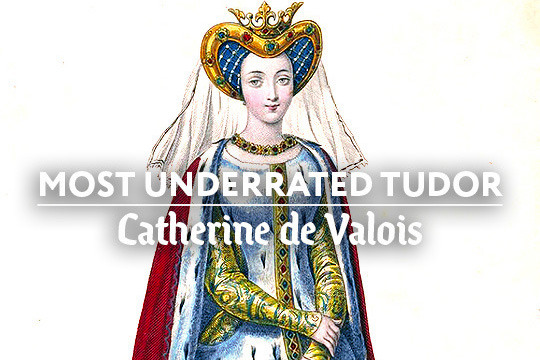

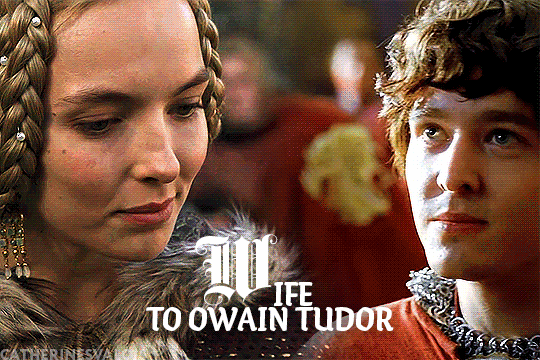
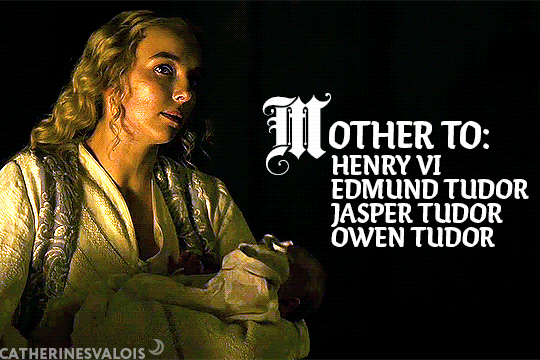
TUDOR WEEK 2022
DAY 5 MOST UNDERRATED TUDOR FAMILY MEMBER(S) → CATHERINE DE VALOIS
Catherine de Valois was the daughter of Charles VI and Isabeau of Bavaria. During the Hundred Years War, Catherine was contracted to marry Henry V of England as part of the peace treaty, known as the Treaty of Troyes. Their marriage was intended to pave the way for France and England to cease fighting with Henry V on the throne of England and France. This didn’t happen. Henry V died two years later leaving behind not only the widow Catherine, but their infant son, Henry VI. At some point after Henry V died, Catherine entered into a relationship with Owain Tudor. Owain ap Maredudd ap Tudur (or Owen Tudor) was a Welsh courtier from a distinguished family from Penmynydd. At the time of their relationship, Owain was installed as either the keeper of her wardrobe or household. Altogether, Catherine had three sons with Owain and the couple remained together until her death in 1437. Her sons Edmund and Jasper were close with their half-brother, King Henry VI. While there is usually doubt as to the legitimacy of Owain and Catherine’s marriage, an entry in the Parliament Rolls states that Edmund and Jasper (the two eldest sons of Owain and Catherine) were conceived and born within wedlock. This would suggest that some form of evidence or proof of marriage was the basis of this declaration.
For a family tree for Catherine and her children see this → post
I want to thank @richmond-rex for their helpful information on the legitimacy of Catherine and Owain’s marriage and their children. If you love Tudor content, go follow!
Image
1. Catherine of Valois by Edward Hargrave, 1842.
#tudorweek2022#dailytudors#catherine de valois#catherine of valois#owain tudur#owain tudor#owen tudor#house of tudor#tudorerasource#tudoredit#perioddramaedit#periodedit#perioddramasource#gifshistorical#userperioddrama#userbennet#historicwomendaily#women in history#historical ladies#historical women#henry v#henry vi#tudor history#gifs: mine#richmond-rex
259 notes
·
View notes
Text
I've been thinking about how Katherine J. Lewis made this remark about Catherine de Valois and Isabeau of Bavaria
It is often claimed, without supporting evidence, that Isabeau was notoriously promiscuous, sometimes in discussions of Katherine. Strickland strongly implies this, calling Isabeau a “wicked woman” and a “degraded woman.” None of the scholarship on Katherine has explicitly drawn comparisons with her mother. Yet the two have received parallel treatment because the claim that Katherine was governed by her fleshly passions is taken at face value, without acknowledgement of the ideological implications of such obviously gendered criticism. (x)
Because while scholarship doesn't make this comparison*, there's Denise Giardina's Good King Harry and Brenda Honeyman's Good Duke Humphrey, where Catherine is presented as the young and beautiful version of her mother - conniving, evil, promiscuous. Since Giardina describes Isabeau in quite grotesque terms, there's also the implication that Catherine will one day become as monstrous in appearance as her mother, her exterior finally matching her interior.
However, the vast majority of novels about Catherine are sympathetic and view her 'notorious promiscuity' as an unfair and untrue slander that denies Catherine's status as a romantic heroine. These novels are frequently positioned as interventions, reclaiming Catherine's story as a tale of true love.
All the while, however, these novels stick to the traditional view of Isabeau of Bavaria. She is still "conniving, evil, promiscuous", fat and thus grotesque, and an abusive mother (this characterisation also pops up in novels about Isabelle de Valois too, though Isabelle's reputation is for tragedy, not romance or promiscuity). Typically, Isabeau terrorises Catherine as a child, coldly pimps her out once she's of an age to be married, and always derides her. Isabeau, often depicted as physically repulsive because of her obese, aged body, is also frequently jealous of Catherine for her youth and beauty. Giardina presents Isabeau on the other hand as being absolutely deluded about her appearance, imagining herself to be as beautiful and as sexually desirable as Catherine to the point where she offers herself sexually to her son-in-law upon hearing Henry V has quarrelled with her daughter. The scene makes clear her delusion by focusing on Henry's revulsion of her physical body which she has exposed to him a grotesque attempt at seduction.
While the purpose Isabeau serves in these narratives is both a matter of perceived "historical accuracy" (though some of these books were published after the historical reassessments of Isabeau by the likes of Tracy Adams and Rachel Gibbons) and to render Catherine as sympathetic as possible (setting the scene for her "rescue", usually by either Henry V or Owen Tudor, both serving as her romantic hero), it also feels like Isabeau is being used as to refute Catherine's reputation for "notorious promiscuity", presenting Isabeau as the most monstrous iteration of that so that the behaviour that earns Catherine that reputation is always considered a far lesser, if not wholly unproblematic, infraction.
In other words, Isabeau is the dark mirror of Catherine. Isabeau's sexual desires are about the physical, not the personal. She is insatiable and undiscerning, concerned only with her own gratification. She's at the mercies of her uncontrollable lust, bestial, and ultimately shallow. But Catherine? Catherine is driven by only pure emotions. She's in love, she's a romantic. Catherine doesn't fuck, she makes love. Catherine is the furtherest thing from a slut - a woman searching for true love. If you want to see a real slut, look at Isabeau. Not Catherine, a martyr to true love.
(Or Eleanor Cobham, who often serves as an antagonist to Catherine after Catherine is widowed - though, unlike Isabeau, Eleanor's scandalous sexuality is often suppressed. She coldly uses her sexuality to advance, unlike Isabeau, who is overcome by lust, or Catherine, who is in love. Eleanor, it could be argued, serves a dark mirror of Owen Tudor - the lover of lesser status who advances through the sexual conquest of a high status individual.)
None of these women's reputation for promiscuity is particularly warranted by modern standards. Isabeau's alleged adulteries come from Burgundian propaganda that aimed to undermine her and Louis, Duke of Orleans, or else developed in the years after the Treaty of Troyes to discredit Charles VII's claim to the throne. There is no evidence that this was anything more than slander. Catherine's reputation was borne from the fact she secretly remarried after Henry V's death to a man of lower status in defiance of the minority council. Eleanor's one known sexual relationship was with a man she later married and who probably should be considered estranged from his wife at the time. Eleanor could be considered as a homewrecker (though I would argue such a label ignores the political circumstances in which Humphrey, Duke of Gloucester's first marriage fell apart) but not necessarily promiscuous. But even if they were promiscuous, isn't time we moved on from demonising women for their sexuality?
* Well, John Ashdown-Hill calls Isabeau of Bavaria "something of an nymphomaniac" and says it's "possible that Catherine inherited her mother's strong sexuality", but I hardly count him as a scholar and you can't inherit sexuality, wtf.
7 notes
·
View notes
Note
What are your thoughts on the Bal des Ardents (the ball Isabeau of Bavaria threw for her lady-in-waiting in order to entertain her husband but it ended up with a group of men burning to death)?
i think it would make an incredibly gut-wrenching scene in a TV series
2 notes
·
View notes